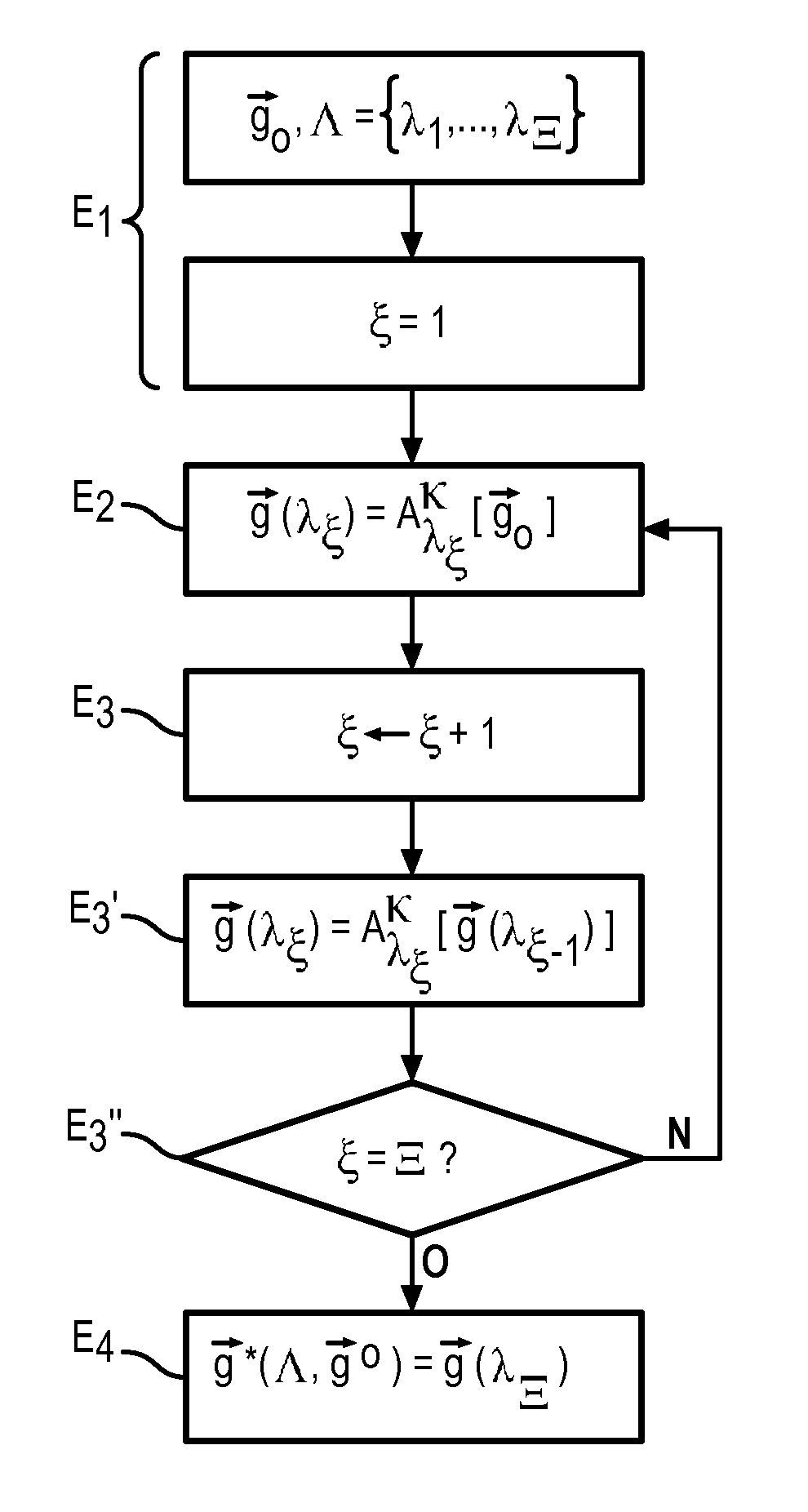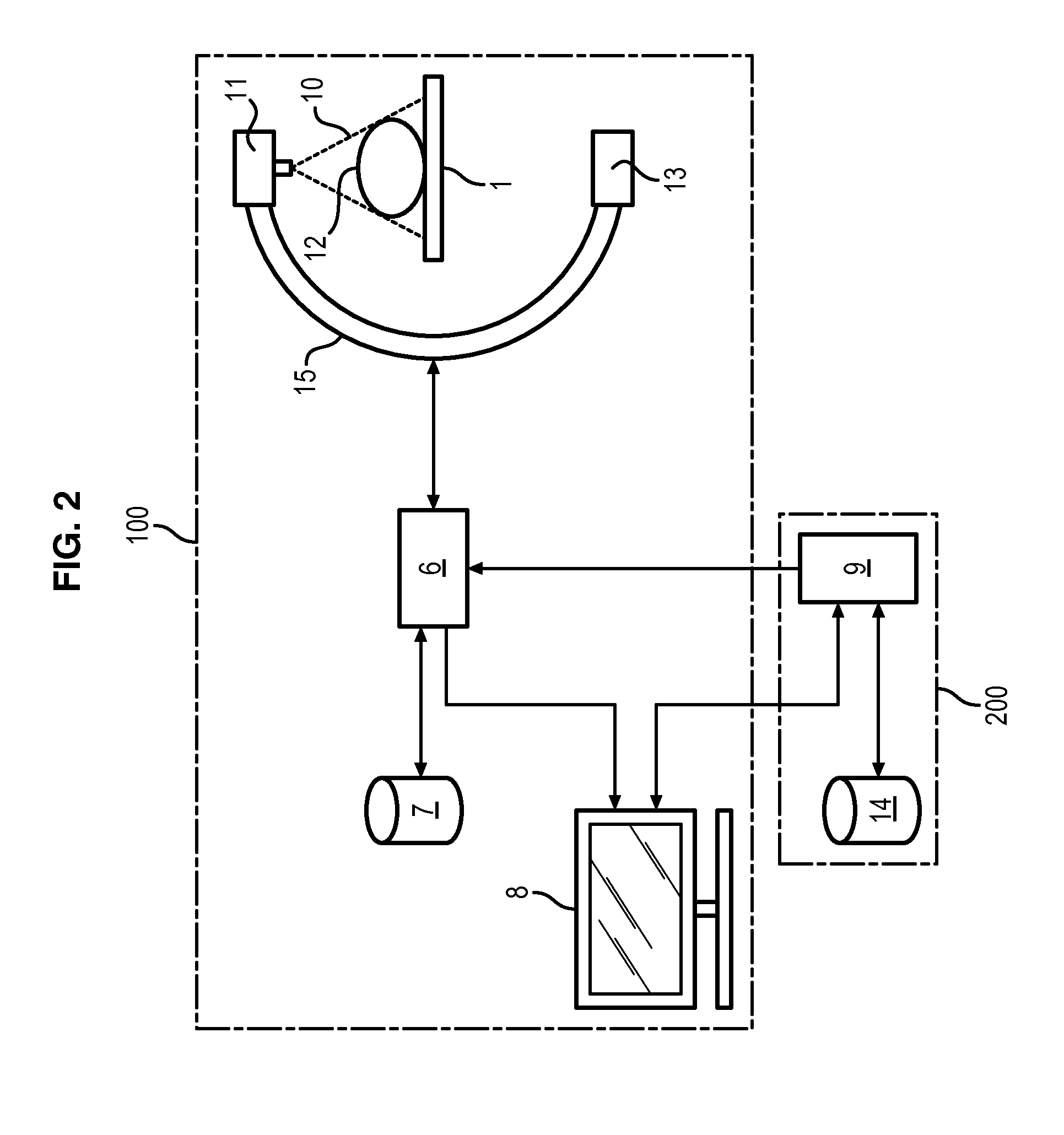Tomographic reconstruction of a moving object
a moving object and reconstruction technology, applied in tomography, applications, instruments, etc., can solve the problems of inability to have exact prior knowledge of the motion m, and the problem of not uniformly solving the problem of bias
- Summary
- Abstract
- Description
- Claims
- Application Information
AI Technical Summary
Benefits of technology
Problems solved by technology
Method used
Image
Examples
Embodiment Construction
[0028]FIG. 2 schematically illustrates a medical imaging system 100 to acquire 2D projection images for the reconstruction of a 3D image of an object such as an organ. The system may be used for the detection and characterization of stenosis in vessels. The medical imaging system 100 comprises: a support 1 intended to receive a patient (not illustrated) to be examined, in whom it is desired to image an organ 12; a source 11 intended to emit an X-ray beam 10; a detector 13 arranged facing the source 11 and configured to detect the X-rays emitted by the) source 11; a control unit 6; a storage unit 7; and a display unit 8. The X-ray source 11 and the detector 13 are connected by means of a C-arm 15, for example.
[0029]The detector 13 may be a semiconductor image sensor, for example comprising caesium iodide phosphor (scintillator) on a transistor / amorphous silicon photodiode array. Other suitable detectors are: a CCD sensor or a direct digital detector which directly converts X-rays int...
PUM
 Login to View More
Login to View More Abstract
Description
Claims
Application Information
 Login to View More
Login to View More - R&D
- Intellectual Property
- Life Sciences
- Materials
- Tech Scout
- Unparalleled Data Quality
- Higher Quality Content
- 60% Fewer Hallucinations
Browse by: Latest US Patents, China's latest patents, Technical Efficacy Thesaurus, Application Domain, Technology Topic, Popular Technical Reports.
© 2025 PatSnap. All rights reserved.Legal|Privacy policy|Modern Slavery Act Transparency Statement|Sitemap|About US| Contact US: help@patsnap.com



